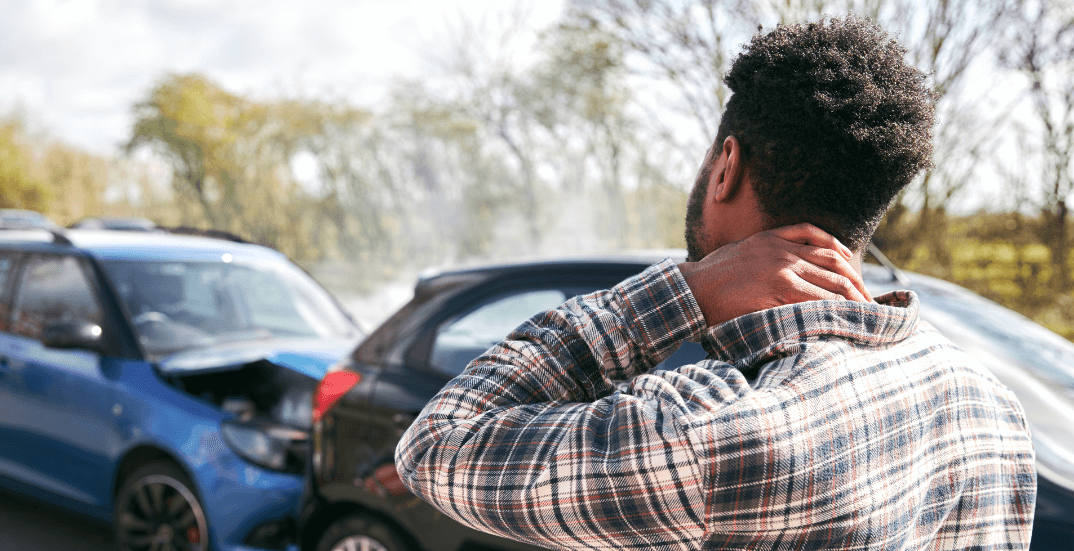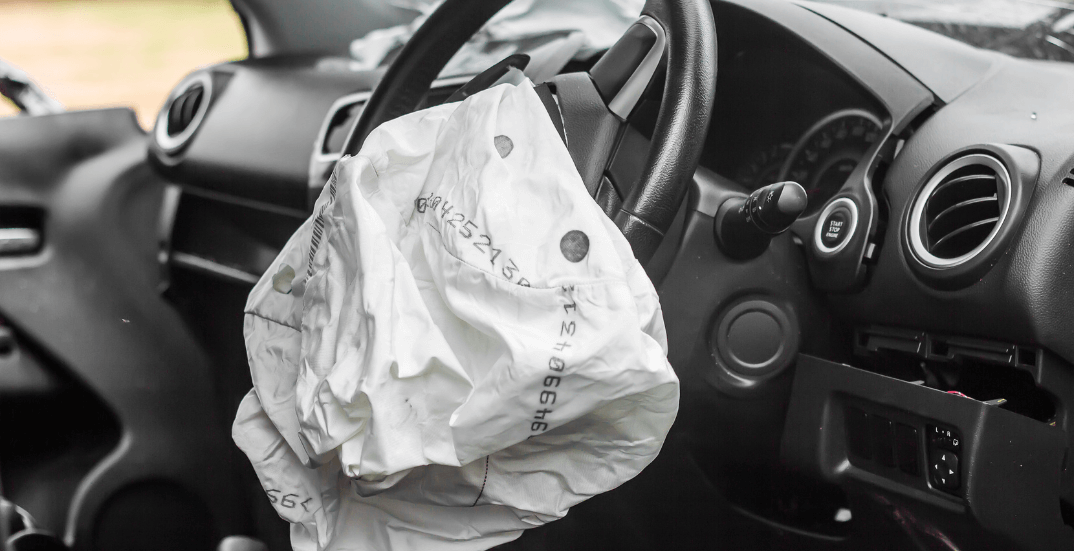
Partner at AKD Lawyers
Practice Areas: Personal Injury

Rear-end collisions are among the most frequent types of car accidents, often occurring due to distracted driving, speeding, or tailgating. While some may consider these accidents minor, they can cause serious and even life-altering injuries. From whiplash to spinal cord injuries, the effects of a rear-end collision can linger for months or even years.
If you or someone you love has been involved in a rear-end accident, understanding the potential injuries, their symptoms, and your legal options is crucial. This guide explores the most common injuries caused by rear-end collisions and what steps you should take next.
What Causes Rear-End Collisions?
Rear-end collisions happen for various reasons, but most of them stem from human error. Drivers who are distracted, following too closely, or speeding may not be able to stop in time, leading to a crash.
In Louisiana, RS 32:81 states that drivers must maintain a “reasonable and prudent” following distance. This means that drivers must leave enough space between their vehicle and the one in front to allow for a safe stop. When this rule is violated, the rear driver is typically held liable for the accident.
Other common causes of rear-end collisions include:
- Sudden stops by the leading vehicle
- Aggressive driving behaviors like tailgating
- Poor weather conditions that reduce traction
- Mechanical failures such as brake malfunctions
Regardless of the cause, these accidents can result in serious injuries that may require long-term medical care.
Common Injuries in Rear-End Collisions
Rear-end collisions often result in a variety of injuries, ranging from mild discomfort to severe, long-term conditions. Understanding these injuries can help victims recognize symptoms early and seek appropriate medical care.
Whiplash: The Most Common Rear-End Collision Injury
One of the most frequently reported injuries from rear-end collisions is whiplash. When a vehicle is struck from behind, the force causes the head to whip forward and back rapidly. This unnatural movement can stretch the tendons, ligaments, and muscles in the neck, leading to significant pain and mobility issues.
“Whiplash is one of the most commonly reported injuries after a rear-end collision. The impact from behind causes a victim’s head to ‘whip’ forward and backward rapidly, stretching tendons, vertebrae, and nerves in the neck.”
Whiplash symptoms may not appear immediately. Many people start to feel stiffness, headaches, or dizziness hours or even days after the accident. Some victims experience chronic pain, reduced mobility, or cognitive issues if the condition is left untreated.
If you notice neck pain, stiffness, or headaches after a rear-end accident, seeking medical attention is critical. Even if the pain seems minor, early treatment can prevent long-term complications.
Chest Injuries: Impact from Seatbelts and Steering Wheels
Rear-end collisions frequently result in chest injuries, especially when the impact causes a driver to slam into the steering wheel. The force of the accident can break ribs, cause internal bleeding, or result in severe bruising.
Seatbelts, while essential for safety, can also contribute to chest injuries. The sudden restraint from a seatbelt can cause what is known as seat belt syndrome, which includes injuries to the abdominal wall, ribs, and internal organs.
“Even if symptoms don’t appear immediately after a crash, injuries like whiplash and concussions can manifest days or weeks later. Seeking medical attention promptly is crucial for diagnosis and legal documentation.”
If you feel persistent pain in your chest or notice bruising, shortness of breath, or dizziness, get medical help right away. Internal injuries can become life-threatening if left untreated.
Herniated Discs: Damage to the Spine
Rear-end collisions put immense pressure on the spine, which can lead to herniated discs. The discs in your spine act as cushions between the vertebrae, and a sudden jolt can cause them to rupture or shift.
Herniated discs can cause severe pain, numbness, or tingling in the arms or legs. In some cases, they can limit mobility and require long-term physical therapy or surgery.
Spinal Cord Injuries: The Most Severe Consequence
In high-speed rear-end collisions, the risk of spinal cord injuries increases significantly. These injuries occur when the spine is fractured or severely compressed, potentially leading to paralysis.
“In high-speed rear-end collisions, the risk of severe injuries such as traumatic brain injuries, spinal cord damage, and internal bleeding increases significantly.”
If a person loses sensation or mobility after an accident, immediate medical intervention is necessary. Spinal cord injuries can have lifelong consequences, including permanent disability and chronic pain.
Traumatic Brain Injuries (TBI)
A sudden jolt or impact to the head during a rear-end collision can cause traumatic brain injuries (TBI). Even if the skull remains intact, the brain can hit the inside of the skull, leading to bruising, bleeding, or swelling.

TBI symptoms range from mild headaches and dizziness to severe cognitive impairments, memory loss, and mood changes. In some cases, TBIs require extensive rehabilitation and long-term medical care.
Louisiana Laws and Regulations on Rear-End Collisions
Anyone involved in a rear-end collision must understand Louisiana’s laws regarding them. The state follows specific legal guidelines that determine fault and liability, impacting how insurance claims and lawsuits are handled.
Fault Determination in Rear-End Collisions
In most cases, Louisiana law presumes fault on the trailing driver in a rear-end collision. This means that if a driver crashes into the vehicle in front of them, they are generally considered responsible for the accident. The reasoning behind this is simple: drivers are expected to maintain a safe following distance to allow enough time to react to sudden stops or changes in traffic conditions.
One of the key legal statutes governing rear-end collisions in Louisiana is Louisiana Revised Statute RS 32:81, which states:
“The driver of a motor vehicle shall not follow another vehicle more closely than is reasonable and prudent, having due regard for the speed of such vehicle and the traffic upon and the condition of the highway.”
This law underscores the importance of maintaining a reasonable and prudent following distance based on factors such as speed, road conditions, and traffic flow. Failure to do so often results in the trailing driver being held liable for damages in a crash.
Exceptions to the Presumption of Fault
While Louisiana law generally assumes the rear driver is at fault, there are exceptions where the leading driver may be partially or fully responsible for the accident. Some circumstances that could shift liability include:
- Sudden and Unjustified Stops: If the front vehicle comes to an abrupt stop without a valid reason, especially in moving traffic, they may share responsibility for the crash.
- Reversing into Another Vehicle: If a driver suddenly puts their vehicle in reverse and collides with another car, they may be at fault.
- Brake Light Malfunctions: If the lead vehicle’s brake lights are broken or non-functioning, the trailing driver may not have been able to anticipate the stop.
- Road Rage or Intentional Braking: Some drivers engage in aggressive driving behaviors, such as brake-checking (slamming on brakes suddenly to cause a rear-end collision).
Since Louisiana follows a comparative fault rule, even if the leading driver is partially at fault, the trailing driver may still bear some responsibility. This makes legal guidance crucial in determining liability
Steps to Take After a Rear-End Collision
If you’ve been involved in a rear-end accident, taking the proper steps immediately after the crash can protect both your health and your legal rights.
Immediate Actions
Your priority after a rear-end collision should be ensuring safety and checking for injuries. If possible, move to a safe location away from traffic, but do not leave the scene.

Call 911 to report the accident. Law enforcement officers will document the scene, create an accident report, and help determine liability. A police report can be very important if the other driver argues responsibility.
Medical Attention
Even if you feel fine after the accident, it’s essential to seek a medical evaluation as soon as possible. Injuries such as whiplash, spinal injuries, and internal trauma may not show symptoms immediately. A doctor can assess your condition and provide medical documentation that may be necessary for an insurance claim or legal case.
“Many rear-end collision injuries, especially whiplash, do not become fully apparent until days after the accident. Seeking medical attention early can prevent complications and strengthen your personal injury claim.”
Legal Considerations
To protect your rights and maximize your potential compensation, take the following legal steps:
- Document the Scene: Take photos of vehicle damage, skid marks, traffic signals, and road conditions.
- Gather Evidence: Collect contact information from witnesses and exchange insurance details with the other driver.
- Notify Your Insurance Company: Report the accident to your insurer, but avoid making detailed statements without legal guidance.
- Consult a Personal Injury Attorney: A skilled lawyer can examine your case, negotiate with insurance companies, and guarantee you obtain reasonable compensation for medical bills, missed earnings, and pain and suffering.
Common Injuries & Their Symptoms
| Injury Type | Common Symptoms | Possible Long-Term Effects |
| Whiplash | Neck pain, stiffness, headaches, dizziness | Chronic pain, mobility restrictions |
| TBI (Brain Injury) | Confusion, memory loss, nausea, vision problems | Cognitive impairment, mood disorders |
| Spinal Injuries | Numbness, weakness, paralysis | Permanent disability, loss of mobility |
| Chest Injuries | Rib fractures, internal bleeding, breathing pain | Long-term respiratory issues, chronic pain |
| Soft Tissue Damage | Swelling, bruising, limited movement | Painful scar tissue, limited flexibility |
FAQs About Rear-End Collision Injuries
What should I do immediately after a rear-end collision?
Ensure your safety, check for injuries, and call emergency services. Exchange information with the other driver and take photos of the scene. Seek medical attention even if you feel fine, as some injuries may not be immediately noticeable.
How long after a rear-end collision can injuries appear?
Some injuries, like whiplash or concussions, may not present symptoms for hours or even days after the accident. Always get a medical evaluation to ensure hidden injuries are diagnosed early.
Is the rear driver always at fault in a rear-end collision?
In most cases, yes. Louisiana law presumes that the rear driver is responsible unless evidence proves otherwise (e.g., sudden and unreasonable braking by the lead driver).
Can I claim compensation for rear-end collision injuries?
Yes. If another driver was at fault, you may be entitled to compensation for medical expenses, lost wages, and pain and suffering. A personal injury lawyer can help assess your claim.
How long do I have to file a personal injury claim after a rear-end collision in Louisiana?
Louisiana has a strict one-year statute of limitations for personal injury claims. It’s crucial to take legal action promptly to avoid losing your right to compensation.
Conclusion
Rear-end collisions may seem minor at first, but they can result in serious, long-term injuries. Whiplash, chest injuries, herniated discs, and even traumatic brain injuries can significantly impact your daily life. Many of these injuries don’t present immediate symptoms, making early medical evaluation critical. Seeking prompt treatment not only protects your health but also ensures proper documentation if you need to pursue legal action.
If you’ve been injured in a rear-end accident, you may be entitled to compensation for medical expenses, lost wages, and pain and suffering. Navigating insurance claims and legal procedures can be overwhelming, especially while recovering from an injury. That’s where experienced legal representation can make a difference.
At Alvendia, Kelly & Demarest, our dedicated team of personal injury attorneys is committed to helping accident victims secure the compensation they deserve. We have successfully represented clients in complex car accident cases, ensuring that negligent drivers are held accountable.
Don’t settle for less than you deserve. Contact Alvendia, Kelly, and Demarest today for a free consultation, and let us fight for your rights.
Categories

In 2003, after being dissatisfied with the quality of legal care for victims of car accidents, Roderick ‘Rico’ Alvendia sought to establish a new firm focused on providing high-quality legal services to aid injured victims and their families. J. Bart Kelly, sharing Rico’s passion for upholding justice, joined the firm later that year, and established a partnership.






